The Second World War was a global conflict fought from 1939 to 1945 (although related wars began earlier). It was one of the bloodiest wars in history. More than 50 million people were killed and many more were wounded.
After the First World War, people in Northamptonshire and across the world wanted peace. However, the terms of the peace treaty were harsh on Germany and caused resentment. The 1920s and '30s saw a rise of dictatorships in Germany, Italy, and Japan (together known as the Axis). Combined with increasing aggression and expansion throughout the world, conflict became ever more likely and countries began to prepare for war.
Concerned about bombing, the British government set up an investigation into detecting enemy aircraft. In 1935, scientists tested an early form of radar in a field near Weedon Bec. The ‘Daventry Experiment’ used reflected radio waves from the BBC transmitter on Borough Hill to detect a Heyford bomber.
Another preparation for air raids was the removal of museums’ collections from London. Planning began in the 1930s and items were moved to large country houses in safer areas. Twelve tonnes of objects from the British Museum were taken to Boughton House and Drayton House.
Across Britain, warships were built and army drills were undertaken. Military recruitment increased, gas masks were stockpiled, and bomb shelters were ordered.
The outbreak of war
On 1st September 1939, Nazi Germany invaded Poland and the Second World War officially began. Britain declared war on Germany two days later.
In Britain, conscription was introduced immediately. By the end of 1939, more than one and a half million men had joined the armed forces. The Northamptonshire Regiment fought all over the world. Alongside them were millions of soldiers from India and elsewhere in the Empire. From December 1941, women were conscripted too. They could either work in industries or join one of the women’s branches of the armed services. These provided non-fighting roles that allowed more men to serve on the front line.
After Germany quickly defeated Poland and France, Britain was left to face the Axis alone. The United States (US) and the Soviet Union did not join the Allies until 1941.
The threat of invasion and the Battle of Britain
With the threat of invasion, many troops were based in Britain and stationed in country houses taken over by the government. For example, a battalion of the Leicestershire Regiment was lodged at Ashby St Ledgers and a battalion of the Worcestershire Regiment was posted to Haselbech House. The Northamptonshire Yeomanry stayed in the UK until 1944.
The Home Guard was also set up in May 1940 to help defend against invasion. Although Britain was never invaded, the Home Guard worked throughout the war, guarding factories and patrolling fields. In September 1940, the local Home Guard caught a German spy in a ditch near Denton. He had parachuted in and been knocked out when his radio hit him in the mouth.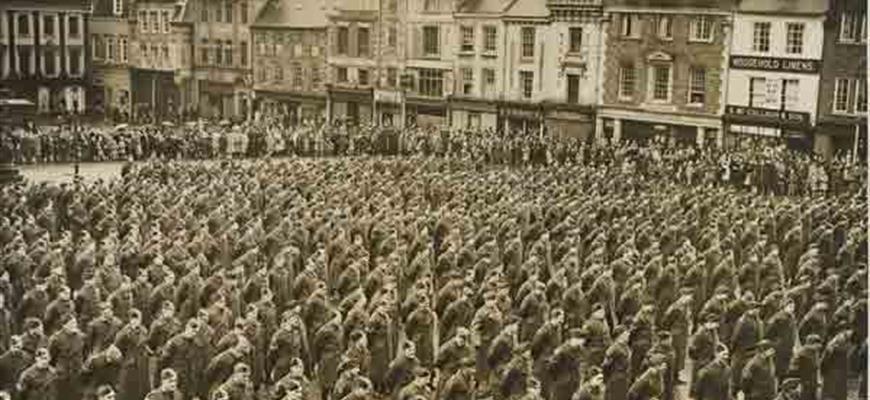
In June 1940, Germany launched an aerial attack known as the Battle of Britain. They hoped to control of the skies and destroy military production before launching a sea invasion.
Places that could be targets for German attacks took precautions. For example, the Corby Steel Works, the Royal Ordnance Depot, and the Grand Junction Canal were camouflaged. The Royal Air Force (RAF) also built decoy airfields to draw enemy fire away from the real ones.
Despite being outnumbered at first, the RAF was victorious. The earlier invention of radar, tested in Northamptonshire, gave Britain an advantage by helping detect attacks. Using anti-aircraft guns and fighter planes, the British armed forces shot down planes faster than the Germans could replace them. Meanwhile, British factories increased production and built over 1700 new fighter planes. In September 1940, having lost the battle of the skies, Germany called off the invasion of Britain.
Bombing campaigns
Instead, the Luftewaffe (the German Air Force) began to bomb British cities in order to ruin morale. They hoped this would put pressure on Britain to surrender. One of the worst attacks in Northamptonshire took place in August 1942 when an air raid on Wellingborough killed six people and injured fifty-five. Luckily, it was a bank holiday and thousands of people at a fair on the edge of town were saved from the attack. The bombs destroyed or damaged hundreds of houses and several pubs, churches, and schools.
Destruction was also caused by accidents. In July 1941, an RAF Stirling bomber crashed in the centre of Northampton. Its bombs did not detonate and no civilians were killed, but it caused huge damage to shops on Gold Street, shown in the photograph below. Another crash took place in December 1943 when an American B-17 bomber crashed in Deenethorpe. Fortunately, the crew managed to get out of the plane and clear the village before its bombs went off. The blast was felt as far away as Kettering, 12 miles from the crash site.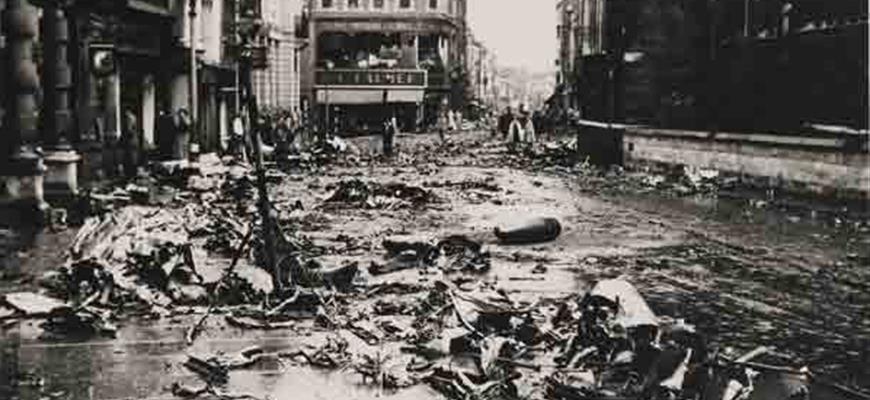
However, compared to London, industrial cities, and ports, Northamptonshire was relatively safe. Recognising this, two women set up the Kettering Rest House. The charity home offered free stays, where “shocked and bombed-out folks could go for a week or two until they felt able to face life again.”
Similarly, because it was a low-risk area, Northamptonshire received more evacuees than any other county except Somerset. Before the war, the Mayor of Northampton said:
I know that, if war came, no resident of Northampton would think any effort too great to try to save the lives of children exposed to the horrors of aerial bombardment in a crowded city.
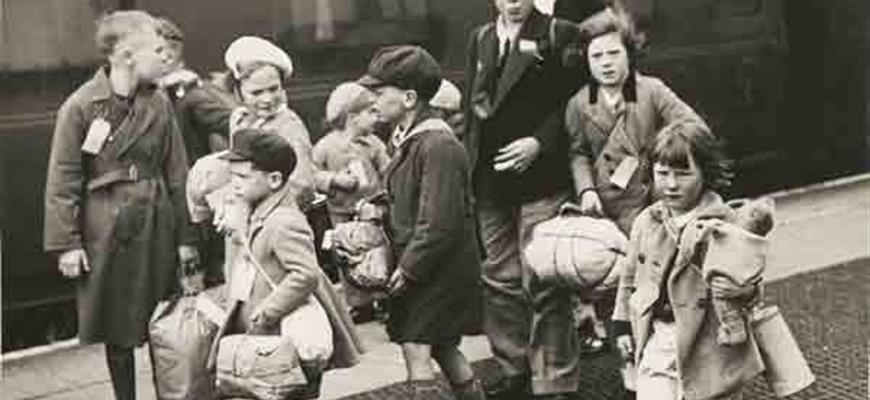 However, this was not always true and evacuees’ experiences varied. The villages of Warkton and Great Oakley were known for being unwelcoming and people referred to an anti-evacuee belt around Kettering. On the other hand, Geddington was particularly friendly and six homes even volunteered to host children.
However, this was not always true and evacuees’ experiences varied. The villages of Warkton and Great Oakley were known for being unwelcoming and people referred to an anti-evacuee belt around Kettering. On the other hand, Geddington was particularly friendly and six homes even volunteered to host children.
The Home Front
Like in the First World War, factories across Northamptonshire made uniforms, guns, and ammunition. Once again, the county produced most of the boots for the British Army. With so many men in the armed forces, many of the workers were women.
Women’s jobs included making tubes at the Corby Steel Works, driving canal boats to deliver coal, and making munitions in filling factories.
Before women were conscripted to work in 1941, many entered the workforce voluntarily. In 1939, the Women’s Land Army was set up to prevent food shortages and ‘Land Girls’ took up caring for animals, ploughing fields, and harvesting crops. Women joined local farmers’ clubs to learn more and sat practical exams to prove their skills. Many also attended training at colleges such as the Northamptonshire Agricultural Institute near Moulton. However, despite becoming skilled employees, Land Girls earned much less than male farm workers.
Even with the work of the Women’s Land Army, German blockades caused a food shortage. The government introduced rationing in January 1940 and each person received a ration book with coupons. At first, only meat, butter, tea, and sugar were rationed, but more foods were added later. Certain non-food items were also rationed, including clothes, petrol, and soap.
Due to the shortages, civilians were asked to not waste anything. Propaganda encouraged people to ‘Dig for Victory’ (making gardens allotments) and ‘Make Do and Mend’ (repairing old clothing). Recycling schemes were also introduced. They advertised that empty tins were used to build airplanes, rags were sewn into blankets for soldiers, and bones were turned into explosives. As well as regular collections, there were also appeals, such as Northampton Salvage Week. Local campaigns like these boosted morale by making people feel that they were helping the war effort. However, little scrap metal was actually used.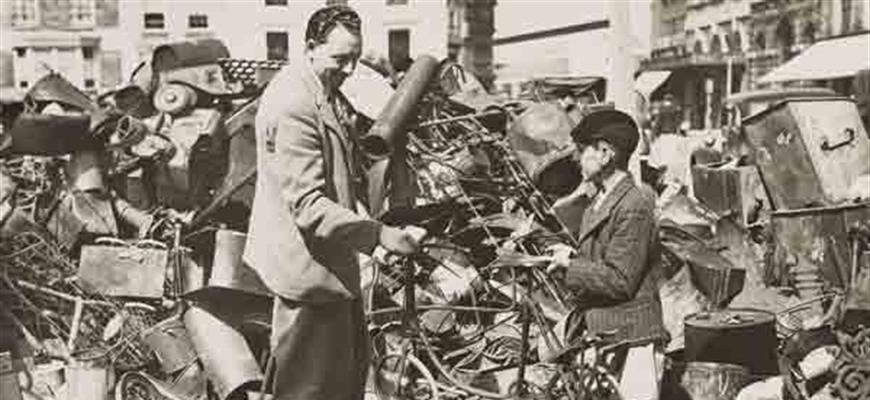
Americans in Northamptonshire
Many foreign troops stayed in the county during the war, including Polish pilots and the Free French at Finedon Hall. After the US entered the war in December 1941, Northamptonshire was also home to American troops.
By the end of the war, the US had seven airbases in the county. At first, the new airfields were unpopular with locals. In the words of one serviceman, locals “didn’t take kindly to us Americans moving in and tearing up their countryside.” However, the shared cause helped bring people together.
Friendships were made and many Americans had romances with locals. For example, Catherine and Anita Neil’s parents met while their father was stationed in Wellingborough. Their mother was local and their father was a black American Staff Sergeant. The British government complied with US racial segregation, which meant that white troops were billeted in Northampton and black soldiers stayed in Wellingborough. Their father returned after the war to marry their mother, but Catherine said he was “one of the rare few that did.” Children of American soldiers and local women were insultingly referred to as ‘war remnants’, and for mixed-race children, it was difficult to hide.
The Battle of Normandy
On 6th June 1944, the Allies launched an air, naval, and land assault on Normandy in France known as D-Day. It was the largest sea invasion in history and the start of the liberation of Nazi-occupied Europe.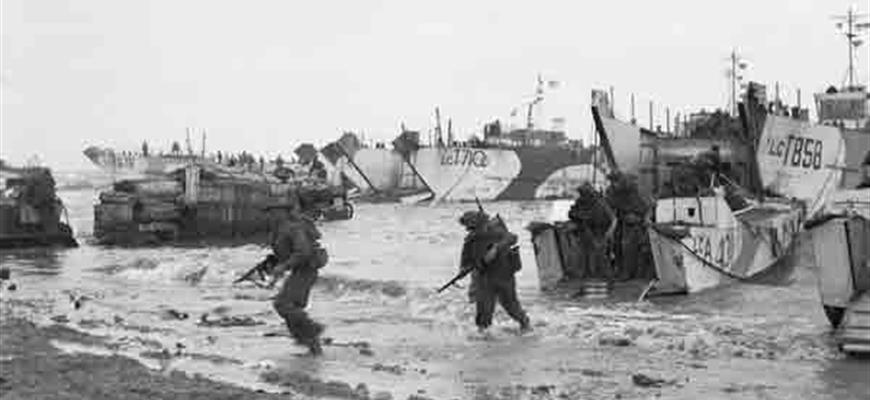
The Northamptonshire Yeomanry took part in D-Day, landing at the area codenamed Gold Beach. Although they were originally a cavalry regiment, tanks had replaced their horses by the Second World War.
To unload supplies, two temporary harbours were assembled off the coast. The Mulberry Harbours were built in sections in Britain and shipped across the sea. Wenman Bassett-Lowke’s model-making company in Northampton had made models of them to help test their design.
The Corby Steel Works also supported the invasion through Project PLUTO (Pipe Lines Under The Ocean), which supplied fuel to Allied troops after D-Day. Tubing made at Corby was coiled on a floating drum, then unwound onto the seabed as the drum was towed to France.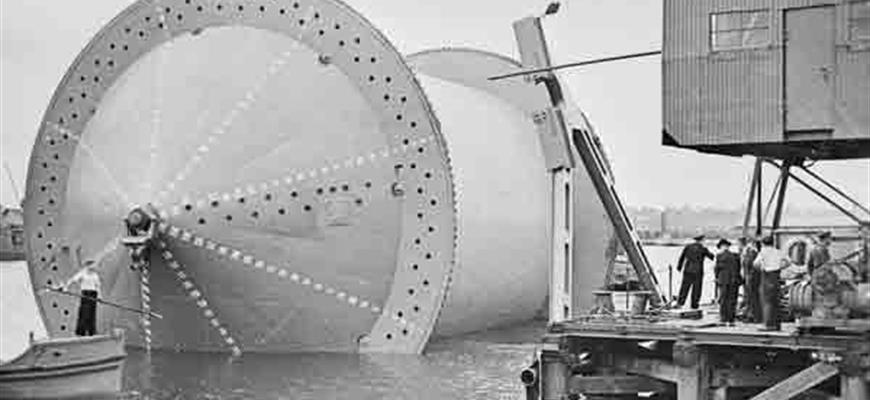
Allied groups elsewhere in the county worked to support the French Resistance. The American Eighth Air Force used Harrington Airfield near Kettering for Operation Carpetbagger. Their role was to parachute arms, equipment, and agents to resistance groups in occupied countries. Their activity peaked during the invasion of France. In July 1944, the four squadrons at Harrington undertook 424 successful flights, delivering sixty-nine agents and over 5000 containers, 3000 packages, and 1500 bundles of leaflets. Similarly, the radio transmitting station on Borough Hill sent coded messages to spies and resisters.
Despite high casualties and early setbacks, the Allies continued to push inland in France. The Northamptonshire Yeomanry fought in several key battles. Bill Barudi of the Yeomanry described the liberation of France in his diary:
Driving through Bayeux we received a terrific welcome from the people. One elderly man with one leg stood stiffly to attention at the salute as we all passed. One or two women were weeping, whether from happiness I couldn’t say.
In August, the Allies liberated Paris and the Germans retreated across the River Seine. Although fighting would rage for another year, it was the beginning of the end.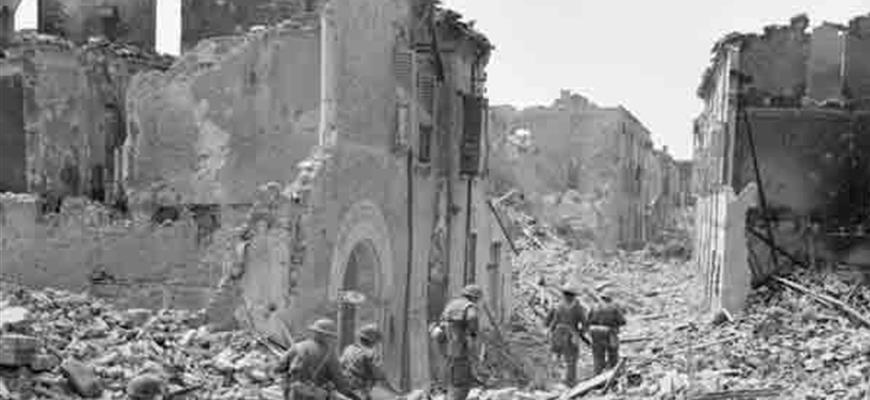
The end of the war
Germany accepted defeat in May 1945. Japan surrendered three months later after the US dropped nuclear bombs on two cities, Hiroshima and Nagasaki.
People in Northamptonshire and across Britain held street parties to celebrate the end of the war. However, Bill Barudi wrote in his diary:
The news left me rather cold and I couldn’t help thinking of chaps who are lying along the route somewhere, and who won’t be demobbed as we hope to be sometime. R.I.P.
The Second World War was one of the bloodiest wars in history. More than 50 million people were killed and many more were wounded. As well as military deaths, millions of civilians died in massacres, carpet bombings, atomic bombings, and the Holocaust.
Hundreds of memorials were built across Northamptonshire to remember local losses.